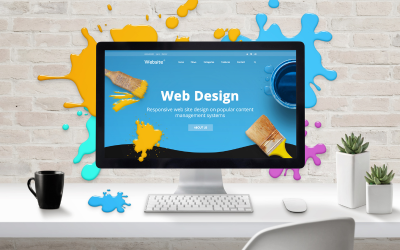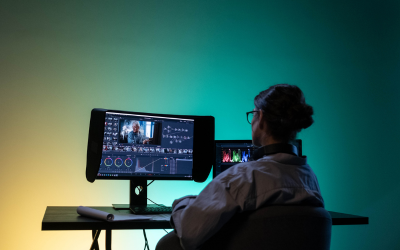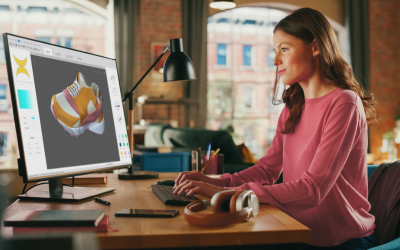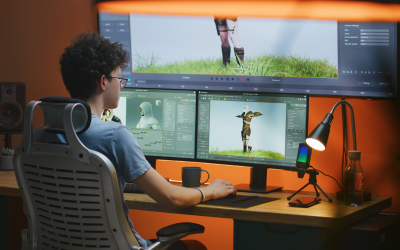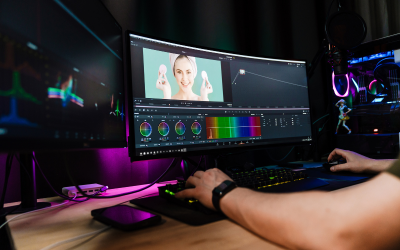Highlights:- Introduction to VFX: Learn the core principles of visual effects, including compositing, 3Dmodeling, particle simulation, and motion graphics. - Industry-Standard Software Mastery: Gain h...
Highlights:
- Introduction to VFX: Learn the core principles of visual effects, including compositing, 3Dmodeling, particle simulation, and motion graphics. - Industry-Standard Software Mastery: Gain hands-on experience with top VFX software like AdobeAfter Effects, Nuke, Houdini, and Autodesk Maya. - Compositing & Rotoscoping: Master the art of combining multiple visual elements seamlessly, andlearn how to isolate objects and elements in shots. - Motion Graphics & Animation: Integrate dynamic motion graphics and animation into VFX projectsto bring scenes to life. - Visual Effects in Film & TV: Understand the application of VFX in different mediums, including film, television, advertising, and video games.
Course Objective:
By the end of this course, you will be able to: - Understand the key principles of visual effects and how they contribute to storytelling. - Master industry-standard VFX tools to create and integrate VFX elements into live-action footage. - Work with compositing, 3D modeling, motion graphics, and particle effects to produce realistic andcreative visual effects. - Apply VFX techniques in various contexts, including film, TV, and digital media production. - Build a professional VFX portfolio showcasing your skills in creating compelling visual effects.
Course Structure:
1. Introduction to Visual Effects (VFX) - Overview of VFX: Key concepts and history of visual effects in media. - Understanding the role of VFX in modern filmmaking and media production. - Introduction to industry-standard VFX software: Adobe After Effects, Nuke, Houdini, AutodeskMaya.
- Basic principles of visual storytelling through VFX.
2. Foundations of Compositing & Rotoscoping
- Basics of compositing: Combining different visual elements into one shot. - Rotoscoping: Isolating objects or elements in a shot for compositing purposes. - Keying and color correction: Techniques for extracting and correcting footage. - Working with green screen and blue screen techniques for compositing
3. 3D Modeling and Animation
- Introduction to 3D modeling: Using software like Autodesk Maya and Houdini. - Texturing and shading: Applying realistic textures and materials to 3D models. - Basic 3D animation: Understanding keyframe animation, movement, and timing. - Lighting and rendering 3D scenes: How to create realistic lighting for 3D objects and environments.
4. Advanced Compositing Techniques
- Advanced compositing workflows in Nuke and After Effects. - Working with multiple layers, mattes, and masks to refine compositions. - Integrating 3D elements into 2D footage for seamless VFX shots. - Using tracking and motion capture data to enhance compositing accuracy.
5. Particle Simulation & Dynamics
- Introduction to particle systems and simulations in Houdini and After Effects. - Creating realistic simulations for fire, smoke, water, and explosions. - Understanding physics-based simulations: Gravity, velocity, and interaction of particles. - Integrating particle effects with live-action footage to enhance realism
6. Motion Graphics & Animation
- Designing and animating motion graphics in After Effects. - Keyframe animation: Smooth motion and dynamic transitions. - Integrating text and graphic elements into motion design for visual impact. - Creating animated logos, lower thirds, and title sequences.
7. Visual Effects for Film & TV
- VFX in film: How VFX enhances storytelling and creates cinematic experiences. - VFX in TV shows and advertisements: Techniques for creating high-impact visuals on a budget. - Using VFX in video games: Real-time effects and interactive visual environments. - Optimizing VFX for different platforms and screen sizes.
8. Final Project & Portfolio Development
- Collaborative and individual projects to showcase your VFX skills. - Combining multiple VFX techniques in a comprehensive final project. - Building a professional VFX portfolio that demonstrates your range of skills. - Preparing your portfolio for presentation to clients or potential employers
Learning Methodology:
- Interactive Lectures: Learn from experienced VFX artists through structured lessons that cover boththeory and practical application. - Hands-on Practice: Work on real-world VFX projects using industry-standard tools like Adobe After
Effects, Nuke, Houdini, and Autodesk Maya. - Assessments & Quizzes: Reinforce learning through regular assignments, quizzes, and skill-buildingchallenges. - Live Sessions: Participate in live Q&A and feedback sessions with instructors to improve your work. - Discussion Forums: Engage with peers to solve problems, share ideas, and receive constructivefeedback on your projects.
Who Should Enroll:
- Aspiring VFX artists and digital compositors looking to enter the visual effects industry. - Filmmakers, animators, and video editors who want to enhance their VFX skills. - Visual artists and designers who want to expand their creative expertise into motion graphics andVFX. - Digital media professionals working in TV, film, advertising, or video games who wish to learnadvanced VFX techniques. - Students or individuals aiming for a career in VFX, animation, or digital production
This Visual Effects (VFX) course is ideal for individuals eager to learn the art and science of creatingbreathtaking visual effects that bring stories to life. Whether you're aiming to work in film, television, or digital media, this course will provide you with the tools, techniques, and creative insights neededto excel in the competitive VFX industry. By mastering both 2D and 3D VFX, you will be well-equippedto take on any creative project and develop a professional portfolio that demonstrates your expertise


